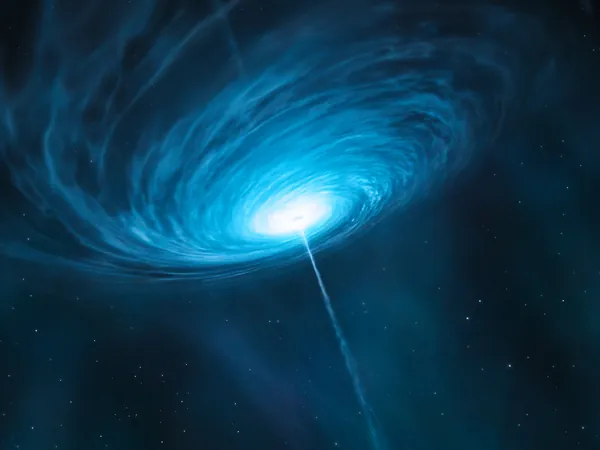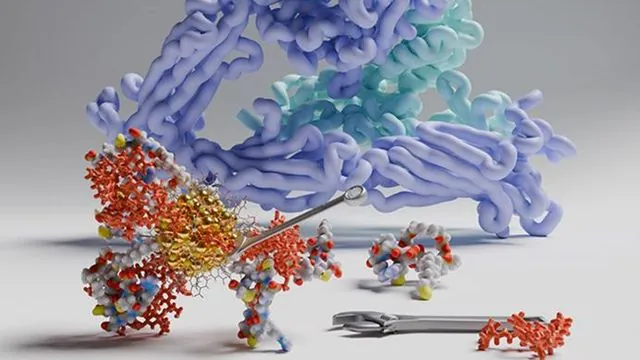
The Astonishing Origins of Gigantic Black Holes: Tiny Seeds from the Big Bang?
2024-11-19
Author: Charlotte
The Mysterious Existence of Supermassive Black Holes
The mysterious existence of supermassive black holes in the infancy of the universe is shaking up our current understanding of cosmic formation. Recent research indicates these colossal entities may have emerged from minuscule seeds born in the chaotic moments right after the Big Bang.
Puzzling Observations
For decades, astronomers have grappled with puzzling observations of mature black holes existing less than a billion years after the universe’s inception. This perplexity arises primarily because our established understanding dictates that black holes are primarily formed through the explosive deaths of massive stars, followed by a slow growth process through mergers or accretion of gas and dust. Given what we know, it seems almost impossible for black holes, having masses equating to hundreds of millions of times that of our Sun, to develop so rapidly.
Alternative Mechanisms of Formation
To explain these elusive giants, scientists have long sought alternative mechanisms of formation. In a groundbreaking study, a team of researchers pointed to a surprising theory: the very first moments of the Big Bang itself.
The Primordial Black Holes Theory
The 1970s saw Stephen Hawking propose that the tumultuous conditions of the early universe could lead to random fluctuations of matter collapsing into black holes. These hypothetical primordial black holes could potentially exist to this day and have sparked theories linking them to the mysterious dark matter permeating the universe.
Investigating the Prevalence of Primordial Black Holes
However, examinations of the universe have imposed significant limitations on the prevalence of these primordial black holes, indicating they cannot make up a substantial fraction of the cosmos; otherwise, we would have identified signs of their presence by now.
Rarity and Role as Seeds
Yet, the latest research suggests that these primordial black holes might not need to be abundant to act as seeds for the formation of supermassive black holes. They could be exceedingly rare—theorized to constitute less than 1% of the total mass of the universe—yet still plant the foundations that allow for growth over time. If formed in the nascent universe, they have sufficient time to accumulate new material and combine with one another, particularly during the early phases of galaxy formation, which occurred within the first few hundred million years post-Big Bang.
Emergence in Tandem with First Stars
This theory posits that these titanic black holes might emerge in tandem with the universe's first stars, rather than waiting for them to appear. By the time stars and galaxies manifest, these black holes might already have achieved their daunting sizes.
The Next Challenge
The research team effectively provided a framework to explain the presence of these vast black holes in the youthful cosmos. However, this is just the nascent phase of their inquiry. The next challenge lies in refining these models, integrating them into sophisticated simulations of the early universe's evolution, to ascertain the plausibility of their proposed scenario.
Conclusion
In an era characterized by astronomical advancements and discoveries, this research could reshape our understanding of black hole formation and fundamentally alter the narrative of cosmic history. Buckle up; the universe just got a lot more intriguing!









 Brasil (PT)
Brasil (PT)
 Canada (EN)
Canada (EN)
 Chile (ES)
Chile (ES)
 España (ES)
España (ES)
 France (FR)
France (FR)
 Hong Kong (EN)
Hong Kong (EN)
 Italia (IT)
Italia (IT)
 日本 (JA)
日本 (JA)
 Magyarország (HU)
Magyarország (HU)
 Norge (NO)
Norge (NO)
 Polska (PL)
Polska (PL)
 Schweiz (DE)
Schweiz (DE)
 Singapore (EN)
Singapore (EN)
 Sverige (SV)
Sverige (SV)
 Suomi (FI)
Suomi (FI)
 Türkiye (TR)
Türkiye (TR)